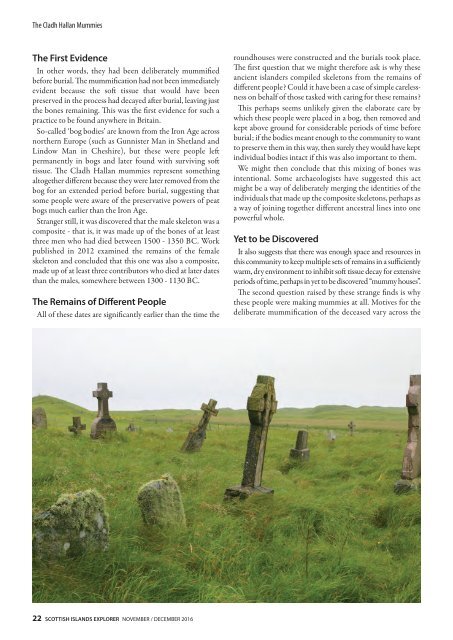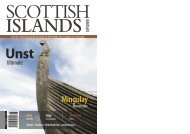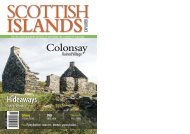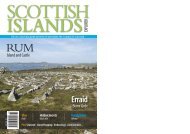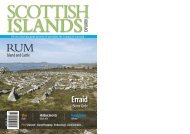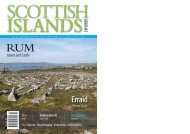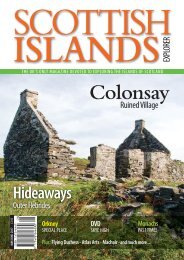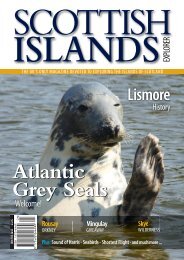You also want an ePaper? Increase the reach of your titles
YUMPU automatically turns print PDFs into web optimized ePapers that Google loves.
The Cladh Hallan Mummies<br />
The First Evidence<br />
In other words, they had been deliberately mummified<br />
before burial. e mummification had not been immediately<br />
evident because the so tissue that would have been<br />
preserved in the process had decayed aer burial, leaving just<br />
the bones remaining. is was the first evidence for such a<br />
practice to be found anywhere in Britain.<br />
So-called ‘bog bodies’ are known from the Iron Age across<br />
northern Europe (such as Gunnister Man in Shetland and<br />
Lindow Man in Cheshire), but these were people le<br />
permanently in bogs and later found with surviving so<br />
tissue. e Cladh Hallan mummies represent something<br />
altogether different because they were later removed from the<br />
bog for an extended period before burial, suggesting that<br />
some people were aware of the preservative powers of peat<br />
bogs much earlier than the Iron Age.<br />
Stranger still, it was discovered that the male skeleton was a<br />
composite - that is, it was made up of the bones of at least<br />
three men who had died between 1500 - 1350 BC. Work<br />
published in 2012 examined the remains of the female<br />
skeleton and concluded that this one was also a composite,<br />
made up of at least three contributors who died at later dates<br />
than the males, somewhere between 1300 - 1130 BC.<br />
The Remains of Different People<br />
All of these dates are significantly earlier than the time the<br />
roundhouses were constructed and the burials took place.<br />
e first question that we might therefore ask is why these<br />
ancient islanders compiled skeletons from the remains of<br />
different people? Could it have been a case of simple carelessness<br />
on behalf of those tasked with caring for these remains?<br />
is perhaps seems unlikely given the elaborate care by<br />
which these people were placed in a bog, then removed and<br />
kept above ground for considerable periods of time before<br />
burial; if the bodies meant enough to the community to want<br />
to preserve them in this way, then surely they would have kept<br />
individual bodies intact if this was also important to them.<br />
We might then conclude that this mixing of bones was<br />
intentional. Some archaeologists have suggested this act<br />
might be a way of deliberately merging the identities of the<br />
individuals that made up the composite skeletons, perhaps as<br />
a way of joining together different ancestral lines into one<br />
powerful whole.<br />
Yet to be Discovered<br />
It also suggests that there was enough space and resources in<br />
this community to keep multiple sets of remains in a sufficiently<br />
warm, dry environment to inhibit so tissue decay for extensive<br />
periods of time, perhaps in yet to be discovered “mummy houses”.<br />
e second question raised by these strange finds is why<br />
these people were making mummies at all. Motives for the<br />
deliberate mummification of the deceased vary across the<br />
22 SCOTTISH ISLANDS EXPLORER NOVEMBER / DECEMBER <strong>2016</strong>


